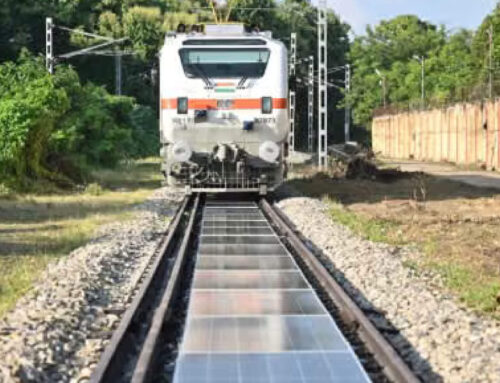
According to a global survey, India is the most cost-effective country for generating rooftop solar energy, with a cost of USD 66 per megawatt-hour, whereas China’s cost is USD 68 per megawatt-hour.
Rooftop solar photovoltaics (RTSPV), such as roof-mounted solar panels used in residences, commercial and industrial buildings, is currently the quickest deployable energy generation technology due to its reduced cost. This is expected to meet up to 49% of worldwide electricity consumption by 2050, according to this global analysis.
The substantial drop in deployment cost, along with policy-driven initiatives, has resulted in a rapid uptake of RTSPV around the world during the last decade.
The RTSPV’s installed capacity increased from 2.5 GW to 213 GW between 2006 and 2018.
RTSPV now represents 40% of global cumulative solar energy installed capacity and roughly one-fourth of total renewable capacity additions since 2018, which is more than the combined new installed capacities of coal and nuclear combined.
At the same time, RTSPV technology has seen a significant decrease in implementation costs, which in 2019 varied from USD 63 to USD 265 megawatt-hour. It’s a 42-79 percent drop from the previous year’s figure.
Rooftop solar photovoltaics are responsible for 40% of global solar photovoltaic capacity installed and a fifth of overall renewable capacity growth.
India has a significant solar rooftop potential of 1.7 petawatt-hour per year, according to the report. According to the report, the country’s current electricity demand is at 1.3 petawatt-hour per year.
The study used a machine-learning algorithm to map 130 million square kilometers of global land surface area to locate 0.2 million square kilometers of rooftop area to estimate the power generation potential of RTSPV globally and its associated expenses.
This rooftop area was then analyzed to document RTSPV’s global power generation potential, which totals 27 petawatt-hours per year of electricity-generating potential for a cost of USD 40 to USD 280 per megawatt-hour, with USD 10 per megawatt-hour achievable for less than USD 100.
According to the study, the lowest costs are in India (at USD 66 per megawatt-hour) and China (at USD 68), while the highest costs are in the United States (at USD 238 per megawatt-hour) and England (at USD 251 per megawatt-hour).
Priyadarshi Shukla, a professor at Ahmedabad University and director of the university’s worldwide center for environment and energy, Shivika Mittal of Imperial College, London, and James Glynn of Columbia University co-authored the paper. Siddharth Joshi, a researcher at University College Cork’s MaREI, the SFI Research Centre for Energy, Climate, and Marine, led the team.
The global potential of RTSPV is 27 petawatt-hour per year, while the global average megawatt-hour cost ranges from USD 40 to 280 per megawatt-hour, with Asia having the highest energy generation potential.
According to the report, Asia (47 percent), North America (20 percent), and Europe (13 percent) have the most global potential.
China is the second-cheapest market for this method, at USD 68 per megawatt-hour (USD 2 higher than the possible Indian pricing), while England and the United States are among the most expensive.
With 181 terawatt-hours per year and 168.07 terawatt-hours per year, Maharashtra and Uttar Pradesh now have the largest solar rooftop potential in the country.
According to the report, Asia (47 percent), North America (20 percent), and Europe (13 percent) have the most global potential.
China is the second-cheapest market for this method, at USD 68 per megawatt-hour (USD 2 higher than the possible Indian pricing), while England and the United States are among the most expensive.
With 181 terawatt-hours per year and 168.07 terawatt-hours per year, Maharashtra and Uttar Pradesh now have the largest solar rooftop potential in the country.
This means that solar photovoltaic technology has come a long way from powering Nasa’s Vanguard satellites in 1958 to lighting houses in Sub-Saharan Africa.
Rooftop solar photovoltaics, as a subset of the solar photovoltaic power generation portfolio, can be deployed as a decentralized system by individuals or huge industrial and commercial complexes, according to the study.
Click Here for more updates Ornatesolar.com







Leave A Comment